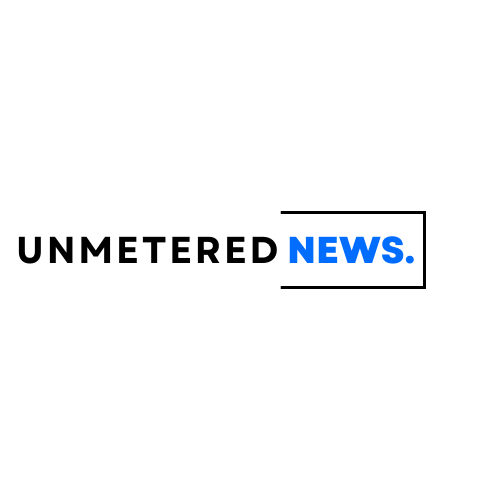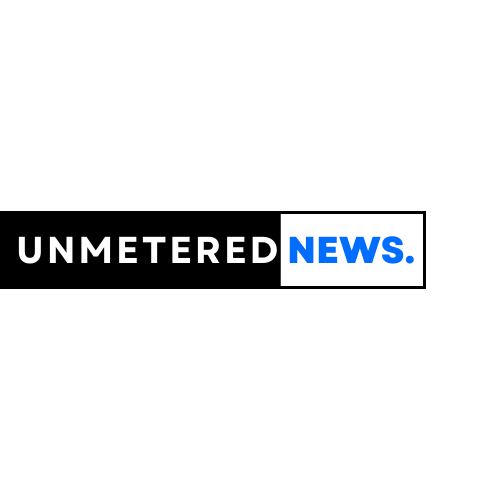Regime Change in Iran? History Says Unlikely

Abstract: Although Israeli and US objectives claim attacks on Iran are meant to destroy its nuclear capabilities, Israel has suggested that regime change may happen. This article argues that regime change in Iran is unlikely due to historical precedence.
After launching Operation Rising Lion on June 12, Israeli Prime Minister Benjamin Netanyahu signaled that Israel’s objectives extend beyond merely dismantling Iran’s nuclear program. Instead, Israel appears to hope that the strikes will encourage the Iranian people to revolt against the theocratic regime that has ruled the country since the 1979 Islamic Revolution. Following the initial attack, Netanyahu reportedly addressed the Iranian public, stating, “This is your opportunity to stand up [to the regime].”
On June 21, prior to US strikes on Iranian nuclear facilities, Israel’s Persian X account, the official page of the Israeli Ministry of Foreign Affairs, posted a picture depicting the face of a lion overlapping both the Israeli and pre-Islamic Revolutionary flag of Iran. The accompanying text, in English, proclaimed: “Reminder: Israelis and Iranians have a rich history of friendship and cooperation. Our war is not with the Iranian people – it is with the regime that divided us. When this regime collapses, our friendship will grow stronger than ever.”

Lion as a Symbol of Persian Nationalism
The lion is a potent nationalist symbol in Persian culture. Israel’s use of the lion on both the name of the Israeli operation and a post on Israel’s Persian-language X account implicitly evoke aspirations of a nationalist resurgence. Before the 1979 Islamic Revolution, the Iranian flag featured the emblem of a lion wielding a sword with a rising sun behind it—a symbol that gained prominence during the Safavid dynasty in the 16th century. Over time, it became widely recognized as the emblem of the Persian Empire and was formally adopted on Iran’s national flag in 1910. This symbol remained until the revolution, when it was replaced with the current emblem of the Islamic Republic. Today, the lion and sun motif is embraced by opposition groups to the Islamic Republic, such as the National Council of Resistance of Iran (NCRI) and the National Union for Democracy in Iran (NUFDI).
The Iran-Iraq War: A Conflict Etched in Iranian Collective Memory
Some analysts also seem to think that the Iranian regime is in fear of collapse. They believe that Iran’s non-Persian minorities can revolt against the regime. Yigal Carmon, President of the Middle East Media Research Institute (MEMRI), told Fox News Digital that non-Persian ethnic groups within the country “could topple the regime in a few months,” citing Iran’s Kurds, Baloch, and Ahwazi populations. Argued here is that the Israeli and US attacks unify many Iranians, but they will also embolden them. Historical precedent supports this assertion.
Saddam Hussein made the grave mistake of miscalculating the Iranian nation and its minorities at the dawn of the Iran-Iraq War. Driven by fear of an Iranian-inspired revolution seeping into his own country of Iraq, as well as to settle a list of historical grievances he had against the Shah, Hussein thought that attacking post-Revolutionary Iran was going to be easy. To be sure, the Shah had fled the country, a new dispensation was still in the works, the Iranian army still had Shah loyalists among its ranks, and both Kurdish and Turkmen separatists were fermenting dissent at opposite corners of the country. For Saddam, it seemed like the perfect time to strike.
His first operation into the oil-rich province of Khuzestan in southwestern Iran appeared as an obvious win. Hussein was convinced that the predominant Arab population would happily join the Iraqi Arabs in toppling the fledgling Shiite-led theocracy taking shape in Tehran. The opposite happened. Instead, the Khuzestani Arabs joined forces with the Iranian army, eventually expelling the Iraqi troops. Today, Khuzestan is a top destination for war tourism in Iran, with 41 national-registered sites related to the Sacred Defense of Khuzestan.
The resistance against Iraq’s invasion of Iran became known as Sacred Defense and is etched within the hearts and minds of the Iranian people, both Persian and non-Persian. Sacred Defense Week in Iran has been held annually during the week of September 21 and it is marked by military parades held by the Iranian armed forces. It is during these parades that the latest ballistic missiles, such as those being currently fired at Israel, are proudly put on display. An article published by Mehr News Agency writes about the Sacred Defense era that:
“With the imposition of war on our country by Iraq, a unique unity was formed. Minority group representatives asserted their communities’ desire to defend their country. Zoroastrian, Assyrian, and Christian communities not only offered their support and contributions but also took action.”
A Tehran Times article writes that the “martyrs of religious minorities” symbolized “national unity” and praises the sacrifices of multiple ethnicities. “With the imposition of war on our country by Iraq, a unique unity was formed. Minority group representatives asserted their communities’ desire to defend their country. Zoroastrian, Assyrians, and Christian communities not only offered their support and contributions but also took action.”
It is worth noting that Iran’s current Supreme Leader, Ayatollah Ali Khamenei, is of Azerbaijani descent. His father relocated the family to Tabriz in northwestern Iran during Khamenei’s childhood, before eventually settling in Mashhad. In Mashhad, one of Iran’s holiest cities, his father led prayers at the Siddiqis Mosque in the city’s market, also known as the Azerbaijanis’ Mosque. Tabriz and much of northwestern Iran are predominantly populated by Azerbaijanis, the largest ethnic group in Iran after Persians. Azerbaijanis are a Turkic-speaking people, and both Tabriz and Baku (the capital of neighboring Azerbaijan) are considered cultural centers of Azerbaijani identity. Khamenei’s Azerbaijani heritage has never been a source of controversy, highlighting the relative harmony between Iran’s Persian majority and its Azerbaijani population.
Overall, the Iran-Iraq War was a disastrous conflict that resulted in mass casualties for both Iraq and Iran. It is also remembered for the violent tactics employed by both sides. Saddam used chemical weapons to kill and maim Iranian Soldiers, and Iran deployed human assault waves, often stacked with children and the elderly, to walk across mine fields. Death toll estimates vary, with the high end estimating one million for Iran and 150,000 dead for Iraq.
Inside Iran, the narrative that the US supported the Iraqi regime in its conquest to kill Iranians is alive and well, and CIA declassified documents released in 2013 certified the allegations. According to the documents, the CIA admits that the Iraqi’s “relied on US satellite imagery, maps, and other intelligence” to launch four major offensive against Iranians using mustard gas and sarin, and that “These attacks helped to tilt the war in Iraq’s favor and bring Iran to the negotiating table, and they ensured that the Reagan administration’s long-standing policy of securing an Iraqi victory would succeed.”
Although the Iran-Iraq War of the 1980s may seem like a distant event to the modern American consciousness, its impact remains deeply ingrained in the collective memory of Iranians. Iranian who grew up in Tehran—and are now in their mid-30s and 40s—still vividly recall the blare of air raid sirens warning of incoming missiles from Saddam Hussein’s regime. One commenter recalling: “That was the war when the world turned its back on Iran.” (Comment from Iranian to author).
Iranians also remember the 1953 Iranian coup d’état wherein the US and the UK staged a coup that overthrew Iran’s democratically elected prime minister Mohammad Mossadegh. Both declassified CIA documents and former President Barack Obama confirmed US participation. For Iranians, this was a direct slap-in-the-face by the US for “shattering Iran’s democratic process.”
Iranians Protest Israeli Aggression
Israel’s attacks on Iran once again stirred up national sentiment, but not in the way Israel was hoping, at least from this analyst’s perspective. Despite the downing of Iran’s internet network, a vast network of Telegram pages are up and running. One channel, titled “The Scared Defense News Agency,” has been publishing multiple posts describing the damage caused by Israeli attacks and showcasing Iranian damage in Israel. A posting published the morning of June 21, prior to the US attacks, claimed to be a photograph of a mural in Vali Asr square of Tehran titled “I am an Iranian Soldier.” The picture depicts Iranian civilians of different occupations and ages giving a salute.

The number of Iranian civilian casualties is not helping the Israeli objective, either. A June 21 post by The Scared Defense News Agency Telegram page quotes Hossein Kermanpour, head of the Iranian Health Ministry’s public relations, as claiming that Israel was responsible for the deaths of “400 defenseless Iranians” and the injury of 3,056 people with missile and drone attacks. Furthermore, he claims that 54 of the “martyrs” were women and children.
In addition, protestors against Israel and the US have begun filling the streets throughout Iran. On June 20, an article in the New York Times reported protests in Tehran and other cities in support of the country’s military. Protestors on the ground in central Tehran addressed both the US and Israel when interviewed by CNN. One woman addressed Donald Trump directly, saying “Trump, you are threatening my leader, don’t you know my nation believes death is sweeter than honey?” When asked what he has to say to Israel, one protestor yelled, “You (Israel) have nothing. You are occupiers. Unreligious. You’re killing people. Killing women. You kill everyone. You’re terrorists.”
United States leadership continues to claim that the US does not seek war, but Operation Midnight Hammer indeed entered Israel’s war on June 21 by attacking Iranian nuclear facilities. Even though the strikes may have crippled the Iranian nuclear program, its ramifications in the Iranian psyche may be quite different. If history repeats itself, the attacks on the Iranian homeland will only unify the Iranian populace against both the US and Israel.
(Disclaimer: The views presented in this article reflect those of the author and not any element of the United States Government, the US Department of Defense, or the Department of the Army).
The post Regime Change in Iran? History Says Unlikely appeared first on Small Wars Journal by Arizona State University.
Related Articles
Israel hits Iran government targets, prison as Tehran launches new attacks
Israel launched missiles at several Iranian government targets and a notorious prison,...
IAEA demands clarity on status of uranium in Iran
Post Content
TCS bolsters SDV development with new European hubs
Post Content







Leave a comment